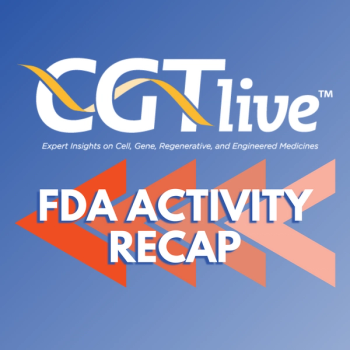
Progress and Pitfalls in Small-Cell Lung Cancer
mall-cell lung cancer (SCLC) is a distinct clinicopathologic entity that is characterized by neuroendocrine differentiation, early metastatic spread, and initial responsiveness to cytotoxic therapy.
Small-cell lung cancer (SCLC) is a distinct clinicopathologic entity that is characterized by neuroendocrine differentiation, early metastatic spread, and initial responsiveness to cytotoxic therapy. Despite appropriate therapy, most patients eventually relapse and die of chemoresistant disease, resulting in an overall 5-year survival rate of only 5%. Although the incidence of SCLC appears to be declining in the United States, it still accounts for 15% to 20% of all cases of lung cancer and 25,000 to 30,000 deaths per year.[1]
Historical Background
Twenty-five years ago, oncologists were optimistic that SCLC would soon be routinely cured with chemotherapy.[2] Cisplatin-based regimens had just tamed testicular cancer, and the dramatic responses reported in patients with SCLC suggested that a cure for this disease was just around the corner. However, we learned that responses-even complete responses-do not necessarily translate into cures, and the overall survival of patients with SCLC has changed little in the past 2½ decades.[3,4]
Historically, patients with SCLC who did not receive therapy had a very poor prognosis, with a median survival of 7 weeks for those with extensive-stage disease (ES) and 14 weeks for limited-stage disease (LS).[5] Over the years, many therapeutic strategies have been evaluated in an attempt to improve the outcome of patients with SCLC. Some of these approaches have succeeded in prolonging survival (Table 1), while many others have proven to be ineffective despite promising preclinical or early clinical findings (Table 2). With modern therapy, we can now expect a median survival of 9 to 10 months in patients with ES SCLC and 18 to 24 months in those with LS SCLC. Most importantly, long-term survival is now possible in 20% to 25% of patients with LS SCLC.
In this issue of ONCOLOGY, Hann and Rudin present a concise and practical overview of the management of SCLC that is consistent with the current National Comprehensive Cancer Network (NCCN) guidelines.[6] They accurately summarize the historical development of therapy for SCLC and present data from clinical studies that support current therapeutic recommendations. Since there is little to disagree with in their review, the remainder of this commentary will focus on some controversial advances that have not been widely incorporated into standard care.
Radiotherapy
Since SCLC is primarily considered a systemic disease, with over two-thirds of patients presenting with hematogenous metastases, it is somewhat surprising that recent progress has mainly involved the use of radiotherapy. From the standpoint of absolute survival, the greatest potential gain was noted in the study by Turrisi et al, in which patients with LS SCLC receiving early, concurrent hyperfractionated thoracic radiotherapy plus EP (etoposide plus cisplatin [Platinol]) were found to have a 10% improvement in long-term survival over those receiving once-daily radiation plus EP.[7] Although this study has been criticized for the relatively low biologic equivalent dose given in the once-daily radiation arm, the results achieved with hyperfractionated radiation are the best reported to date in patients with LS SCLC. Clearly, the acute toxicity of hyperfractionated radiation may be prohibitive in patients with poor performance status or large treatment fields. However, this approach remains underutilized even in those without contraindications, and more effort needs to be made to incorporate hyperfractionated radiotherapy into the care of our patients.
Prophylactic cranial irradiation (PCI) is another radiotherapy approach that has been shown to improve survival in patients with both LS and ES SCLC. In LS SCLC, PCI can improve long-term survival by 5.4%, suggesting that some patients were destined to relapse only in the brain.[8] As expected, the benefit of PCI in patients with ES SCLC is more limited (since they will ultimately relapse at other sites), and PCI may not be appropriate for all patients, particularly the elderly and those with preexisting neurologic or cognitive deficits. Nevertheless, the 14% improvement in 1-year survival after PCI noted in the recent European Organisation for Research and Treatment of Cancer (EORTC) trial represents a significant advance in ES SCLC.[9] Interestingly, many oncologists have not embraced the use of PCI in this setting, whereas they have overwhelmingly incorporated bevacizumab (Avastin) into the treatment of patients with advanced non–small-cell lung cancer (NSCLC) despite a 1-year survival benefit of only 7%, half of that seen with PCI.
Chemotherapy
Platinum-based chemotherapy is the standard in both SCLC and NSCLC, but the issue of cisplatin vs carboplatin remains a point of controversy. In advanced NSCLC, meta-analyses have demonstrated a small, statistically significant, but clinically meaningless benefit for cisplatin.[10,11] Data directly comparing cisplatin- to carboplatin-based regimens in SCLC are sparse. A small, randomized trial of cisplatin plus etoposide vs carboplatin plus etoposide in patients with LS or ES SCLC revealed no differences in response or survival, but less toxicity with carboplatin.[12] Informal comparison of response rates and survival data from phase II and III trials using either cisplatin- or carboplatin-based regimens suggests similar outcomes with either drug in both LS and ES SCLC.
Therefore, in light of the palliative nature of therapy in ES SCLC and the increased nonhematologic toxicity of cisplatin, it seems prudent to favor carboplatin-based therapy for patients with ES SCLC. In LS SCLC-a curable disease for which there is less data on the equivalence of carboplatin-it is reasonable to favor cisplatin-based therapy, with use of carboplatin reserved for those in whom cisplatin is contraindicated or poorly tolerated.
Despite the availability of numerous chemotherapeutic agents with activity against SCLC (Table 3), it is unlikely that empiric regimens of traditional cytotoxic drugs will lead to dramatic improvements in survival. Over the past 2 decades, our understanding of the molecular events that mediate the development and progression of SCLC has expanded dramatically. The identification of numerous molecular targets in SCLC cells has spawned a wide variety of novel therapeutic strategies.[13] Thus far, none of these approaches has demonstrated substantial clinical activity (Table 2). However, SCLC is a molecularly heterogeneous disease, so we must continue to refine emerging strategies in the laboratory and efficiently evaluate them in the clinic in an effort to identify patients who will benefit most from any specifically targeted approach.
References:
1. Navada S, Lai P, Schwartz AG, Kalemkerian GP: Temporal trends in small cell lung cancer: Analysis of the national Surveillance, Epidemiology, and End Results database (abstract 7082). J Clin Oncol 24(18S):384s, 2006.
2. Aisner J, Alberto P, Bitran J, et al: Role of chemotherapy in small cell lung cancer: A consensus report of the International Association for the Study of Lung Cancer workshop. Cancer Treat Rep 67:37-43, 1983.
3. Lassen UN, Hirsh FR, Osterlind K, et al: Outcome of combination chemotherapy in extensive stage small-cell lung cancer: Any treatment related progress? Lung Cancer 20:151-160, 1998.
4. Chute JP, Chen T, Feigal E, et al: Twenty years of phase II trials for patients with extensive-stage small-cell lung cancer: Perceptible progress. J Clin Oncol 17:1794-1801, 1999.
5. Greco FA, Oldham RK: Clinical management of patients with small cell lung cancer, in Greco FA, Oldham RK, Bunn PA (eds): Small Cell Lung Cancer, pp 353-379. New York, Grun & Stratton, 1981.
6. Kalemkerian GP, Akerley W, Downey RJ, et al: Small cell lung cancer. J Natl Compr Canc Netw 6:294-314, 2008.7. Turrisi AT, Kim K, Blum R, et al: Twice-daily compared with once-daily thoracic radiotherapy in limited small-cell lung cancer treated concurrently with cisplatin and etoposide. N Engl J Med 340:265-271, 1999.
8. Auperin A, Arriagada R, Pignon JP, et al: Prophylactic cranial irradiation for patients with small-cell lung cancer in complete remission. N Engl J Med 341:476-484, 1999.
9. Slotman B, Faivre-Finn C, Kramer G, et al: Prophylactic cranial irradiation in extensive small-cell lung cancer. N Engl J Med 357:664-672, 2007.
10. Ardizzoni A, Boni L, Tiseo M, et al: Cisplatin- versus carboplatin-based chemotherapy in first-line treatment of advanced non-small cell lung cancer: An individual patient data meta-analysis. J Natl Cancer Inst 99:847-857, 2007.
11. Hotta K, Matsuo K, Ueoka H, et al: Meta-analysis of randomized clinical trials comparing cisplatin to carboplatin in patients with advanced non-small-cell lung cancer. J Clin Oncol 22:3852-3859, 2004.
12. Sklaros DV, Samantas E, Kosmidis P, et al: Randomized comparison of etoposide-cisplatin vs etoposide-carboplatin and irradiation in small-cell lung cancer. Ann Oncol 5:601-607, 1994.
13. Worden FP, Kalemkerian GP: Therapeutic advances in small cell lung cancer. Expert Opin Invest Drugs 9:565-579, 2000.
Newsletter
Stay at the forefront of cutting-edge science with CGT—your direct line to expert insights, breakthrough data, and real-time coverage of the latest advancements in cell and gene therapy.










































